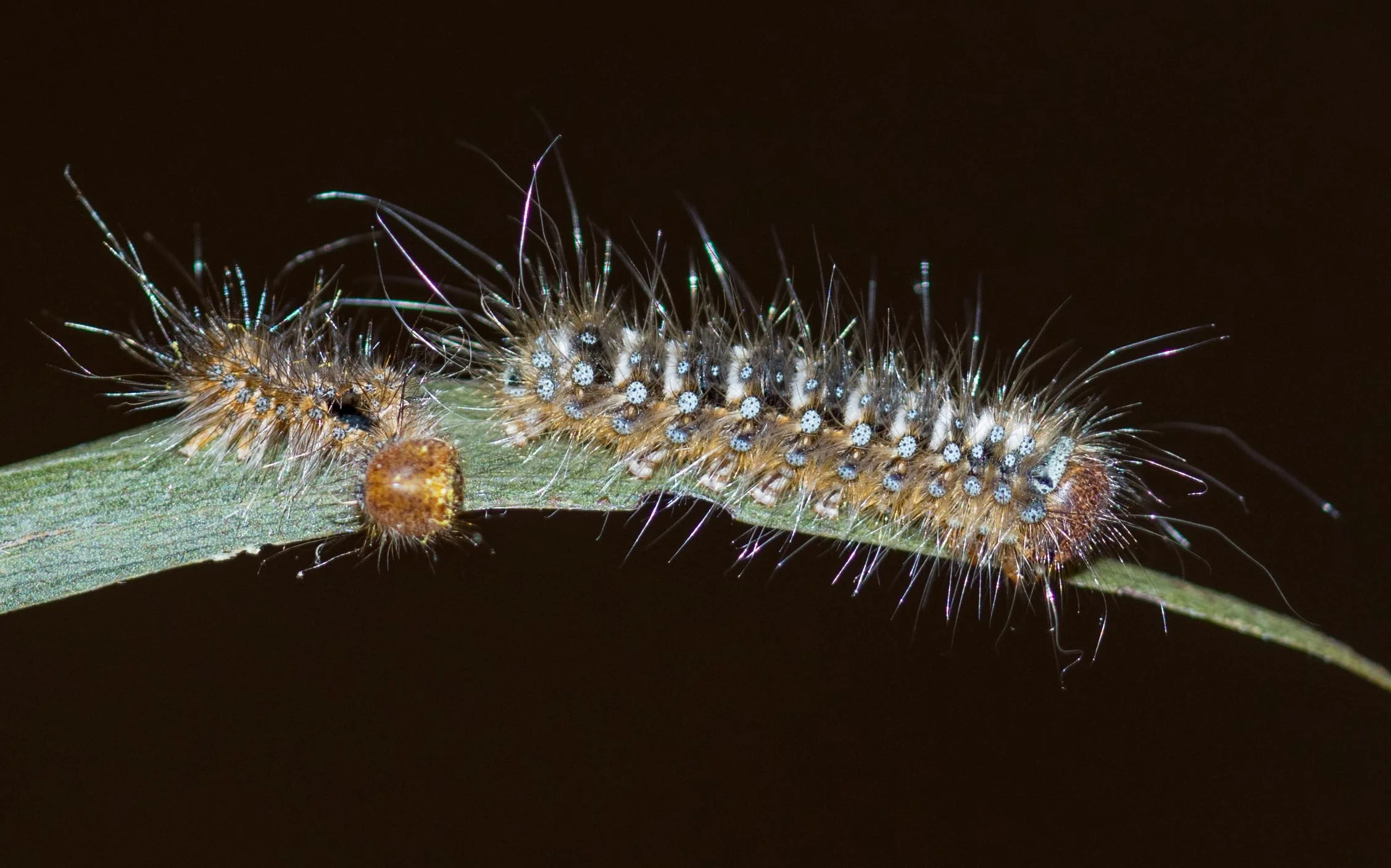
Honeyeater numbers continue to grow
White-naped Honeyeaters are one of many honeyeater species settling into the forest for the summer. They're already making good use of the pond and bird baths.

Grey Fantails are back
Since making a showy reappearance a few weeks ago, several Grey Fantails have taken up residence again and seem to be carving our feeding territories of their own.

A territorial stoush
This morning the forest rang to the calls of Golden Whistlers. We watched on as several males AND females spent an hour or more loudly calling and chasing one another. We assume that we were witness to a boundary dispute. Things have since settled down.

The first damselflies!
Iota Ringtail (Austrolestes io) is a new species for our home list! AND the first damselfly sighting for the Summer. AND flying in tandem and laying eggs in the pond vegetation. Odonata season has begun!

Mystery caterpillar
A newly-moulted caterpillar ... so I'm hopeful we'll be able to raise it through to the adult, and so work out what species of moth this is.

More of the caterpillar buddies
Another two caterpillars currently in care, awaiting metamorphosis, identification, and release.

Residents now, apparently
The cryptic Bassian Thrush have become regular sightings around the block over the Winter months - and they're very welcome to stay for the Summer! In the vegetable garden they do a good job of eating pest snails and slugs.

Back into breeding plumage
Many of the male Superb Fairy-wrens are now sporting their stunning breeding plumage. This one was busy feasting on termites during one of several swarmings we've had this week.

Pockets of purple colour
This is not the only splash of colour in the forest this week, but certainly one of the most garish. Purple-coral Pea (Hardenbergia violacea). It's a tough, twining species, and is often used in revegetation programs.

Wolf spider identification
Wolf spiders (Family: Lycosidae) are notoriously tricky to identify to the genus, let alone species level. It just happened Paul was working on such a project this week ... when he discovered this beauty. It's a male and, unusually, was found on the wall rather than the ground, in the web of a House Spider (Badumna insignis).

Identification confirmed!
Venatrix pictiventris (Four-spotted Huntress)
The collected spider was surprisingly sluggish ... and dead the following morning. The Badumna had obviously won their battle. But this was a happy moment for Paul, as the only way to unambiguously identify the species is belly-up!

Tiny native bees
This tiny native 'reed bee' (Exoneura sp.) was one of many feeding on the nectar and pollen of the equally-tiny Leucopogon flowers.

More butterflies reappear
One of several Candalides hyacinthus (Common Dusky Blue) butterflies to appear this week. The immaculate condition of the wings suggest it has only recently emerged, no doubt having overwintered as a pupa.

New insects are appearing daily
I've yet to identify this bug. It is very similar in overall appearance to the well-known Oncopeltus sordidus (Order: Hemiptera; Family: Lygaeidae), but the colours are wrong. Could be the winter coat for the species ... bit more checking for me to do to ID this one.

Our first sighting
It's not everyday we get to add to our home mammals list!

More than just spines
A close look shows that Echidnas are really furry mammals after all!
















